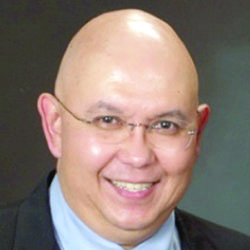2-2-2 A Fast-Track Strategy for High School and College
By Dr. Kuni Beasley
Printed in Practical Homeschooling #104, 2012.
 Dr. Beasley reveals his strategy for a fast track through high school and college.
Dr. Beasley reveals his strategy for a fast track through high school and college.

|

|

Save half the time and cost of your college education
There are many creative strategies to navigate faster, better, and easier through high
school and college. The one I help students with the most is the 2-2-2 Strategy:
- Two years of high school, with intensive college prep
- Two years of dual credit high school and college (optimally, resulting in a high
school diploma and Associates degree)
- Two years through a four-year college to complete a bachelors degree
High school and college will take six years in all, using this plan. 2+2+2=6.
A Warning
Fast Tracking and earning dual credits are excellent ideas—as long as you are
working within a sound strategy. Without a sound strategy, the student may be
investing a lot of time and effort (and expense) for little or no gain. You may
be creating more problems than are being solved.
EXAMPLE: I meet hundreds of homeschool families who jump into dual credit and
CLEP . . . and then come to me for help after disqualifying their students from
freshman scholarships . . . because the students have accumulated too many
credits and are no longer considered freshmen.
Many colleges provide opportunities to implement a Fast Track Strategy. Some
of the more notable include:
- Thomas Edison State College is familiar to many homeschoolers because
College Plus uses their program a lot. TESC has a long history with
homeschoolers.
- Excelsior College. Known for years as New York Regents and the University
of the State of New York, Excelsior has been a leader in non-traditional college
education since the early 70’s. I have helped several students, many of them
adults, navigate this program. I actually prefer Excelsior to Thomas Edison in
many cases because they offer more opportunities and more flexibility in certain
areas.
- Harvard University. Yes . . . THAT Harvard! Believe it or not, Harvard
has been a leader in extension education and has had a distance-learning program
since 1903. My wife is in this program, working on her Bachelors degree. She
received a full scholarship as a transfer student. She takes classes online and
has the same requirements as the regular campus students. This program is very
affordable, considering it is Harvard and an Ivy League school. They also offer
an Associates and a Masters degree in this program.
- University of Oklahoma. OU has had an innovative program for over 30
years. They offer directed study with campus time each summer. They also have a
Masters program.
Here’s a simple strategy for how to craft your own 2-2-2 program:
The First 2 Years:
Foundation and College Readiness Phase
Core courses to complete in this phase:
- English I & II with heavy emphasis on writing.
- Math through Algebra II. I do not recommend students attempt the jump to
College Algebra from Geometry. Although it can be done, it is easier (and more
prudent) to take College Algebra after Algebra II. In addition, it is easier to
prepare for the College Algebra CLEP by taking Algebra II, then using a College
Algebra book to prepare for the CLEP.
- Two years of high school Biology. I recommend this because it provides a
good parachute in case the student opts to complete a high-school diploma before
he or she earns enough dual credit courses to finish high-school—which happens a
lot. Two science credits are usually sufficient to meet the basic high-school
graduation requirements. In addition, students who complete two years of Biology
can usually pass the Biology CLEP with little preparation.
- Geography & US History. This usually meets the state high school diploma
requirements. A good American History course is a good place to start to prepare
for the US History CLEPs.
The Second 2 Years:
Dual Credit Phase
Align your high-school diploma requirements with the Associates degree
requirements. Also, look into CLEP and DANTES exams. You should have a strategy
and plan in place before you pursue credit by examination, or you might end up
with a student who has spent a lot of time, effort, and expense to gain little
or nothing. Not all colleges accept tests for credit, some will accept only
certain ones, and still others will only accept tests taken after the student is
enrolled. Make sure you are looking beyond simply taking the tests for credit.
IMPORTANT STRATEGY: If you are attending a community or junior college, see if
they have a Phi Theta Kappa chapter. This is the Junior College Honor Society
and the first place four-year colleges look to offer transfer scholarships. You
will need about 12 credits and a 3.5 grade-point average or higher to qualify.
Many colleges offer full and partial transfer scholarships.
Final 2 Years:
Finish at a Four-Year College
Well, you’re here. You did it in half the time. Finish your degree. They won’t
put an asterisk at the bottom of your diploma that states “*only went here two
years.”
Final note—don’t do this alone. Get sound advice from people who have done
this and make sure you make a plan.